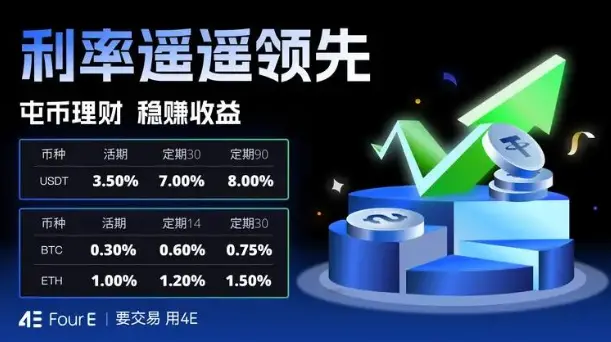4E Observation: Trump's reciprocal tariffs are imminent, and the market ushers in a key turning point

Reprinted from chaincatcher
04/01/2025·29DThe "Tariff Liberation Day" that Trump has mentioned for several weeks is coming, and the global market is experiencing a new round of fluctuations. After U.S. stocks fell again on Monday after suffering a "Black Friday" last week, the Nasdaq fell 8.21% in March. The crypto market was also affected, with Bitcoin ending again with a 3.5% decline in March after recording an 18% decline in February. Ethereum was disappointing, with a cumulative decline of nearly half in the first quarter, and market sentiment was very negative.

Macroeconomic deteriorates, consumer confidence continues to decline
The PCE price index, the Fed's preferred inflation indicator released last week, showed that inflation is still stubbornly rising and consumer spending is more cautious. The monthly and year-on-year growth rate of core PCE in February was higher than expected, and the cost of core services rebounded sharply, driving the rise of "super core inflation".
While key inflation indicators rebounded, the savings rate rose significantly, and consumer spending was once again lower than expected in February. The obvious trend is that individual consumers' spending on goods began to increase than the increase in service spending, indicating that the driving force that supports US GDP growth in the past two years - the consumption willingness of high-income people is also declining, and everyone has begun to be cautious about the future.

Also coincides with the consumption data, the latest consumer confidence index released by the University of Michigan fell to 57, and consumer inflation expectations for the next year rose to 5%, both of which were the worst levels in more than two years.
On the Fed, many voters spoke intensively, emphasizing that maintaining patience is a consensus, and also acknowledged that the deviation of inflation path from expectations and the rising uncertainty of tariff impacts has made the economic outlook in 2025 more blurred.
Consumers and businesses are in a weak mood, the economy enters a fragile stage, and the impact of policy risks is greater than in recent years. Goldman Sachs raised the probability of a recession in the United States to 35% in its report last week, and GDP growth slowed to 1.0%.
**Trump tariffs are a turning point in the market, and may be a peak of
volatility this week**
The "peer-to-peer tariffs" Trump plans to implement on Wednesday are the direct fuse of recent market turmoil. Goldman Sachs expects tariffs to be imposed on all trading partners by an average of 15%, a 5 percentage point increase from previous expectations, which may push up import costs and trigger global retaliation.
In its latest report, Citi summarized three main scenarios and gave corresponding market impacts. First, only reciprocal tariffs were announced, and the market response in this scenario was relatively limited; second, reciprocal tariffs plus value-added tax (VAT), the US dollar index may immediately rise by 50-100 basis points, and global stock markets may also fall; third, in addition to reciprocal tariffs and value-added tax, it also includes industry tariffs, and the market response may be more severe in this scenario.
Since these policies have not been announced at present, given Trump's erratic and inconsistent style, the market is more about positioning expectations, which often change due to various news and may become the peak of volatility this week. In addition, once the policy is settled or the impact appears, the market may reposition its positioning and bring more volatility.
Risk aversion is the main line of the current market
Investors tend to avoid risks whenever major events approach. The performance of US stocks sold off continued to be weak, with a big rebound last week and a disastrous start to trading in the crypto market, and funds accelerated to safe-haven assets.
Since March 14, its net inflows exceeded net outflows for 10 consecutive days. However, starting from March 21, its net inflows did not exceed US$100 million. On March 28, the 10-day continuous net inflows ended, and continuous net outflows of institutional funds.

At the same time, gold performed extremely strongly. Spot gold rose 1.25% on Monday, setting a record high of $3,145, and has rewritten 19 times this year. The cumulative increase in March was 9.33%, with an increase of 18.48% in the first quarter, setting the strongest quarterly performance since 1986, and becoming the world's most eye-catching asset.

Trump will announce reciprocal tariffs at 3 a.m. on April 3. The market is currently on high alert, and the market dominated by risk aversion is extremely fragile. If tariff measures are severe and trigger global trade frictions, risky assets may further decline. As the official partner of the Argentina national team, 4E Exchange provides USDT stablecoin financial products with an annualized return of 8%, providing investors with potential safe-haven options. In addition, 4E also supports bulk gold trading, allowing investors to seize potential growth opportunities in safe-haven assets amid market turmoil.



 panewslab
panewslab